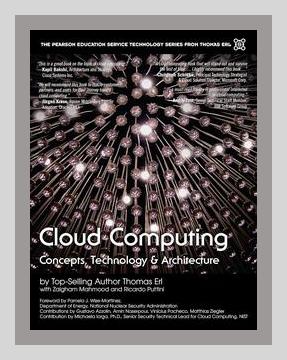Technology and Digital TransformationIT ManagementCloud Computing
Introduction:
“Cloud Computing: Concepts, Technology & Architecture” provides an in-depth analysis of the fundamental aspects, technologies, and architecture that drive cloud computing. The book is structured to give IT managers, business leaders, and cloud technology enthusiasts a comprehensive guide to understanding cloud computing, implementing cloud services, and leveraging cloud technologies for business advantage.
1. Basic Cloud Computing Concepts
Key Points:
– Definition and Characteristics: Cloud computing is defined by its on-demand self-service, broad network access, resource pooling, rapid elasticity, and measured service.
– Service Models: The three primary service models are Infrastructure as a Service (IaaS), Platform as a Service (PaaS), and Software as a Service (SaaS).
Example:
– IaaS Example: Amazon Web Services (AWS) provides virtual machines and storage resources.
– Actionable Step: Evaluate your organization’s current IT infrastructure to identify which components can be migrated to an IaaS model to benefit from scalability and cost reduction.
2. Cloud Service Models
Key Points:
– IaaS: Provides virtualized computing resources over the internet.
– PaaS: Offers a runtime environment for application development and deployment.
– SaaS: Delivers software applications over the internet on a subscription basis.
Example:
– PaaS Example: Google App Engine helps developers build scalable web applications and backends.
– Actionable Step: For startups and small businesses, determine if PaaS offerings can streamline the development process by providing readily available development tools and preconfigured environments.
3. Cloud Deployment Models
Key Points:
– Private Cloud: Operated solely for a single organization, providing greater control and security.
– Public Cloud: Services offered to multiple organizations over the public internet.
– Hybrid Cloud: Combines private and public clouds to deliver a unified, automated, and scalable environment.
– Community Cloud: Shared infrastructure for a specific community with similar needs.
Example:
– Hybrid Cloud Usage: A company uses a private cloud for sensitive data and a public cloud for non-sensitive operations.
– Actionable Step: Conduct a thorough assessment to determine which deployment model aligns best with your organization’s security requirements and workload management strategies.
4. Fundamental Cloud Architecture
Key Points:
– Cloud Delivery Model: Combining service and deployment models to form a coherent architecture.
– Technological Components: Include virtual servers, storage systems, and network configurations.
Example:
– Public Cloud Integration: Amazon Web Services integrates compute, storage, and database services in a configurable and scalable architecture.
– Actionable Step: Design a cloud architecture blueprint that details how various cloud services will integrate with your existing IT infrastructure.
5. Cloud-Enabling Technology
Key Points:
– Virtualization: Enables efficient resource utilization and flexibility.
– Service Oriented Architecture (SOA): Facilitates the creation of modular services.
– Web Services and APIs: Enable integration and interoperability between cloud services.
Example:
– Virtualization Technology: VMware provides virtualized computing resources to create multiple simulated environments from a single physical hardware system.
– Actionable Step: Incorporate virtualization to optimize server resources, reduce hardware costs, and enhance scalability.
6. Cloud Security
Key Points:
– Concerns: Includes data breaches, data loss, account hijacking, and insecure interfaces.
– Best Practices: Use of encryption, identity management, and compliance with regulations like GDPR.
Example:
– Encryption Example: Encrypt sensitive data both at rest and in transit using tools like AWS Key Management Service (KMS).
– Actionable Step: Develop a comprehensive security strategy that includes encryption, regular security audits, and rigorous access control mechanisms.
7. Cloud Cost Management
Key Points:
– Cost Considerations: Pay-as-you-go pricing, subscription models, and cost efficiency.
– Tools: Cost monitoring and analysis tools offered by cloud providers.
Example:
– Cost Management Tool: AWS Cost Explorer helps users visualize their costs and usage.
– Actionable Step: Regularly monitor cloud expenditures using built-in analysis tools and adjust resource usage to align with budget constraints.
8. Cloud Data Management
Key Points:
– Data Storage: Utilizes distributed storage systems like object storage and database services.
– Data Migration: Strategies for moving data to the cloud, ensuring minimal downtime and data integrity.
Example:
– Storage Service: Amazon S3 (Simple Storage Service) offers scalable storage for large volumes of data.
– Actionable Step: Implement cloud-based data storage solutions to leverage scalable and high-availability storage options while ensuring robust backup and disaster recovery plans.
9. Cloud Governance and Risk Management
Key Points:
– Governance: Establishing policies and procedures to manage cloud resources.
– Risk Management: Identifying, assessing, and mitigating the risks associated with cloud adoption.
Example:
– Governance Tool: Microsoft Azure Policy allows organizations to enforce standard practices and compliance at scale.
– Actionable Step: Implement a cloud governance framework that includes policies for resource management, financial oversight, and compliance with industry regulations.
10. Future Trends and Emerging Technologies in Cloud Computing
Key Points:
– Edge Computing: Bringing computation and data storage closer to data sources.
– Serverless Computing: Allowing developers to build and run applications without managing servers.
– AI and ML: Integrating Artificial Intelligence and Machine Learning models into cloud services.
Example:
– AI Integration: Google Cloud AI Platform supports the development and deployment of machine learning models.
– Actionable Step: Explore emerging cloud technologies like serverless computing to reduce operational overhead and focus on development efficiency and innovation.
Conclusion:
“Cloud Computing: Concepts, Technology & Architecture” provides a thorough exploration of cloud computing essentials, from the basic concepts to the advanced technologies and architectures that facilitate cloud services. By leveraging the insights and actionable steps provided in each section, IT professionals and business leaders can effectively navigate the complexities of cloud adoption, optimize their technological infrastructure, and drive business growth through innovative cloud solutions.
Technology and Digital TransformationIT ManagementCloud Computing
